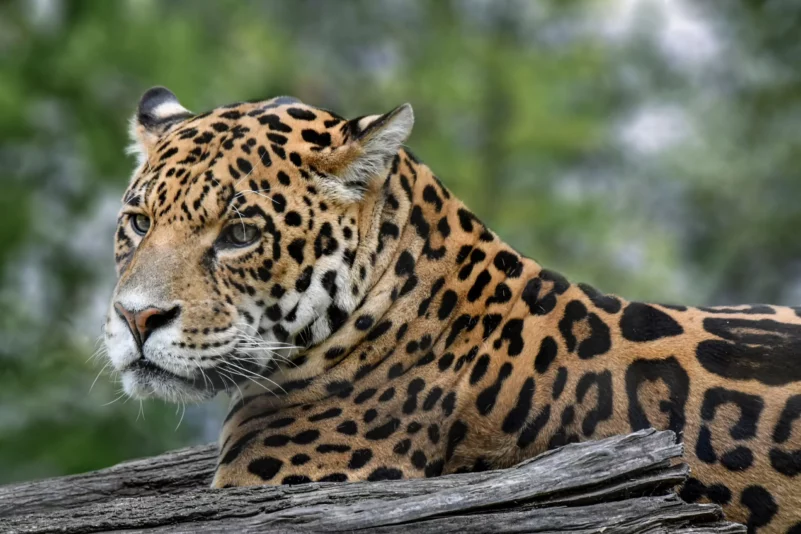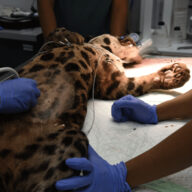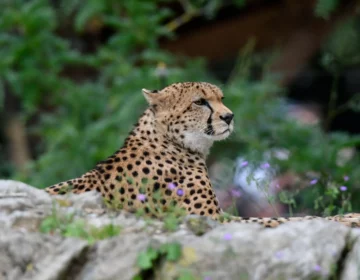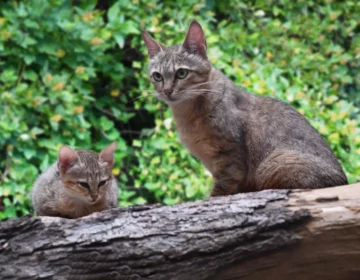
Jaguar
Panthera onca
Jaguar
APPEARANCE
The jaguar is the largest feline living in the Americas. It is a stocky build with an unusually large head and relatively short legs. Compared to other big cats, the jaguar has a distinctly powerful jaw. At first glance, the jaguar’s coat resembles a leopard’s, but the pattern is different: the jaguar has large, thick rosettes around one or more small black spots. The basic color of his fur is pale yellow or fawn; his white belly, throat, and the inside of his limbs are marked with irregular black spots. The jaguar’s tail is fairly short in relation to its body length, spotted, and has several black rings from mid to tip. Melanistic individuals have been recorded.
DISTRIBUTION AND HABITAT
The jaguar’s geographic range extends from southern Arizona through Mexico, Central America, and South America, including the Amazon basin, to northern Argentina to the Rio Negro. Today the jaguar occupies only 51% of their historic range.
It inhabits tropical forests, swampy grasslands, evergreen forests, pampas grasslands, humid savannas, and mangrove swamps.
BEHAVIOUR
The jaguar is a solitary, territorial predator with a mainly nocturnal lifestyle. However, the jaguar can also be active during the day. He is an excellent swimmer and can cross wide streams. He easily hunts animals such as fish, capybaras, and caimans in the water. It is believed to attract fish with their tail.
INTERESTING FACT
The jaguar is the only big cat that regularly kills its victim by piercing its skull with its fangs. He has a massive head and strong fangs, which may be an adaptation for ‘splitting’ well-armored reptiles such as land and river turtles.
FOOD
Jaguars are opportunistic generalist predators – their diet may include as many as 85 different prey species, including mammals, birds, and reptiles. The jaguar’s diet varies depending on where it is found, but it generally prefers mammals, especially large ungulates.
MAIN THREATS
Jaguars are mainly threatened by habitat loss and fragmentation, reduction in prey species, hunting in retaliation, and illegal killing for trophies or illegal trade.





